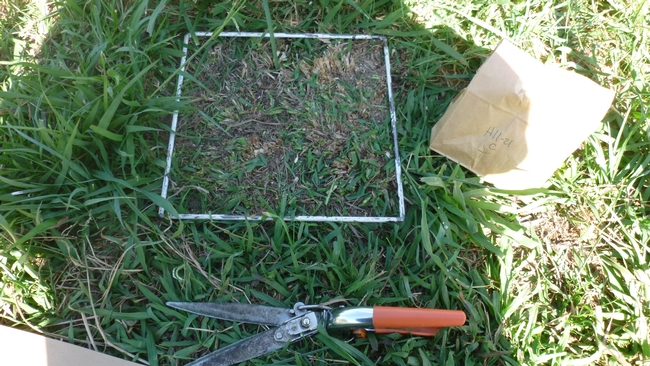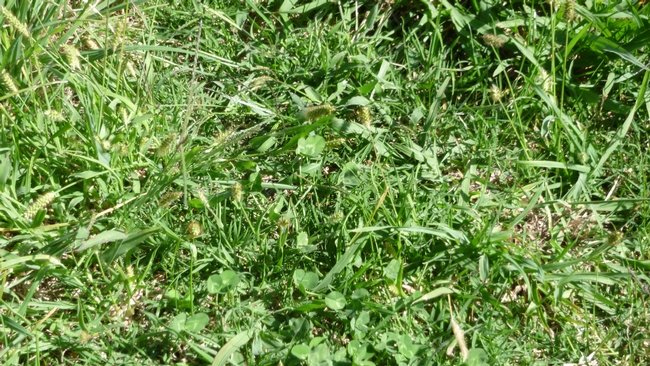
Figure 3: H11-21, Cage B. Measuring forage production leaving 4-6 inches. Photo credit: Nikolai Schweitzer

Figure 4: H11-21, Cage B. Measuring Total Forage Production. Photo credit: Nikolai Schweitzer

Fagure 6: SFREC irrigated forage production in 2016. TFP (Total Forage Production), 4 to 6 (Amount of forage left standing). By Nikolai Schweitzer
During the last two years of field sampling on irrigated pasture at SFREC, there was an increase in forage diversity in the Total Forage Production subplot. Clovers, birdsfoot trefoil, and filaree became increasingly abundant due to the increased sunlight and less crowding from competitive grasses. While the increase in clover and other forbes growth lends to an increase in forage quality, there is an overall decrease in forage production per acre in the TFP treatments when compared to the treatments with 4-6 inches of residual grass.

These treatments are not the only thing that affect forage growth, instead numerous factors can impact irrigated pasture forage growth. Fertilization (rates, composition, timing), irrigation (frequency, amount, duration), grazing (stocking density, class/age of animal), species composition, physical structures (water location, loafing areas, rubbing zones, mineral location), soil properties, aspect, and slope, are other important components to manage or consider.
Source:ucanr.edu